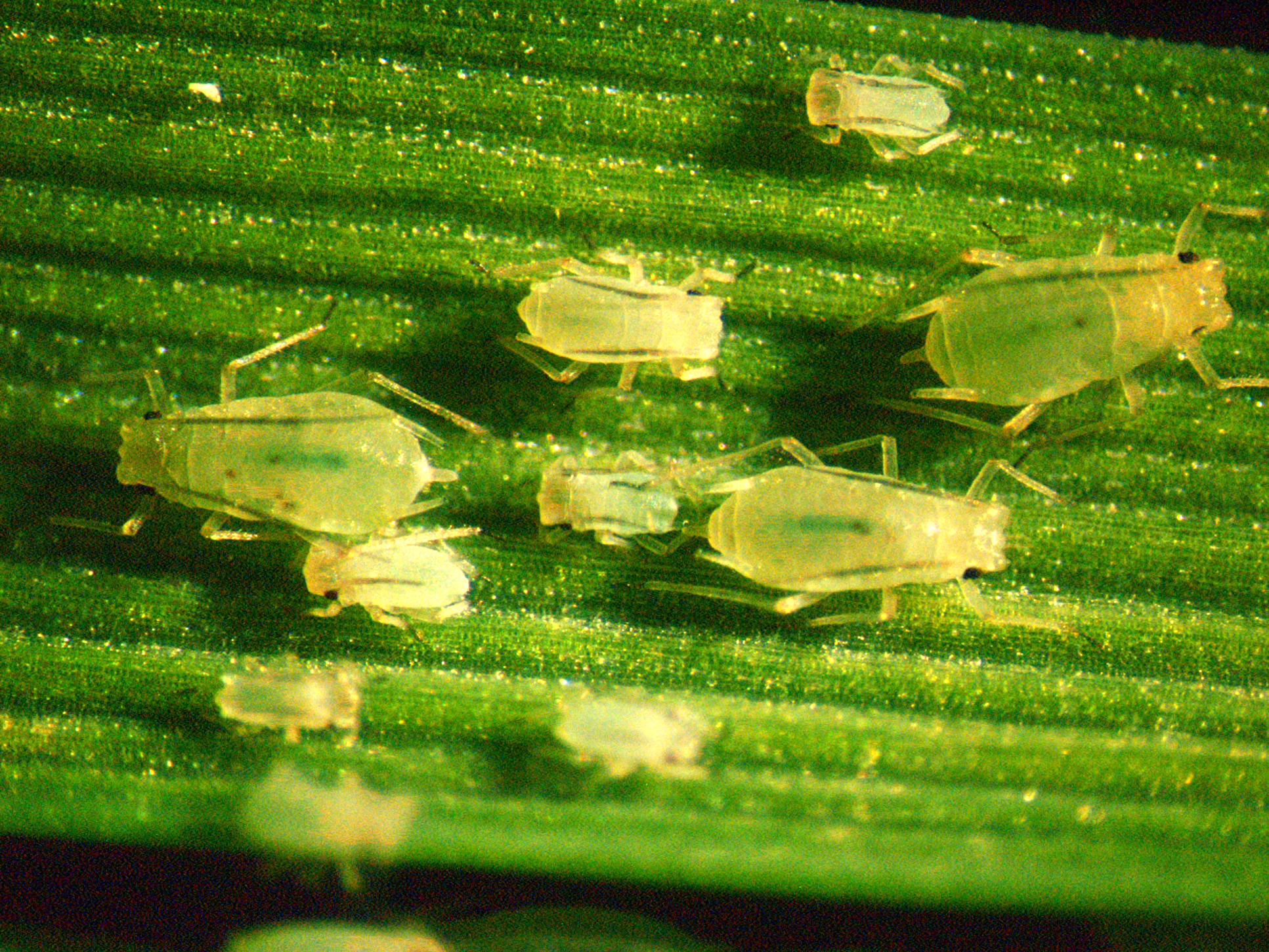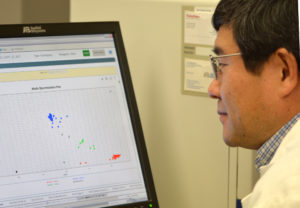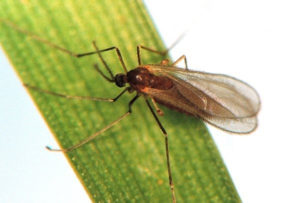Farm & Ranch
[AgriLife Today] Genetic discovery another tool in battle against wheat pests

By: Kay Ledbetter
Writer: Kay Ledbetter, 806-677-5608, [email protected]
Contact: Dr. Shuyu Liu, 806-677-5600, [email protected]
AMARILLO – Greenbug and Hessian fly infestations can significantly reduce wheat yield and quality in Texas and worldwide. Breeding for resistance to these two pests using marker-assisted selection just got a new tool from a Texas A&M AgriLife Research study.
Because genetics is the most economical strategy to minimize losses, AgriLife Research wheat geneticist Dr. Shuyu Liu began two years ago searching for breeder-friendly markers for those two insects. This step is a continuation of ongoing genetic work on insect resistance.
Through the years, a number of greenbug resistance genes have been identified in wheat and its relatives based on their differential reactions to different biotypes, which range from A through K. There are also 18 Hessian fly biotypes, and because it has the ability to overcome resistance genes deployed in wheat cultivars through mutations, it is necessary to identify and utilize resistance genes from diverse sources for wheat breeding.
Scientists use genetic markers to identify regions where specific genes can be found on a particular plant. Liu has identified the neighborhoods or markers for a gene offering greenbug resistance, Gb7, and a gene that provides Hessian fly resistance, H32, in wheat.
Liu’s work was recently published in the Theoretical and Applied Genetics Journal of Plant Breeding Research, detailing the development of the Kompetitive Allele Specific Polymerase Chain Reaction or KASP assays for both genes.
Joining Liu on the publication were AgriLife Research wheat team members Drs. Jackie Rudd, Amarillo, and Amir Ibrahim, College Station, both wheat breeders; Dr. Qingwu Xue, crop stress physiologist; Dr. Chor Tee Tan, an associate research scientist; as well as other students and staff in Amarillo.

Dr. Shuyu Liu, a Texas A&M AgriLife Research geneticist in Amarillo, looks at the results from a KASP assay for insect resistant wheat lines. Clustered in blue are the resistant lines, the susceptible lines are clustered in red, and green indicates lines not pure resistant or susceptible. (Texas A&M AgriLife photo by Kay Ledbetter)
Both genes were identified through previous research, and linked markers for them were mapped, but the detection methods were not well suited for marker-assisted selection for evaluating thousands of plants, Liu said.
He said knowing an address doesn’t mean someone knows where in the city to start looking for it. But by developing single nucleotide polymorphism, or SNPs, which include flanking markers closely linked and located on chromosomes, geneticists are able to give breeders the neighborhood to search.
SNPs are then converted into KASP assays, which are considered breeder-friendly because they are easier to use, faster and more accurate, he said.
Effective molecular markers closely linked to the target genes are the key for the success of marker-assisted selection on traits such as greenbug and Hessian fly resistance, Liu said. For instance, a breeder will typically screen 1,000s of breeding lines, and the KASP acts as a flag to say the necessary genes for a particular trait exists in a particular line.
Through Liu’s work, both genes can now be easily transferred into a new wheat line through marker-assisted selection.
Liu said the Gb7 and H32 are both found in a synthetic wheat, W7984, which is a parental line for a mapping population that wheat researchers are using worldwide. Synthetic wheats are man-made crosses between Durum or pasta-type wheats and Aegilops tauschii. These initial crosses provide access to genes of the wild relatives of wheat, thus increasing usable genetic diversity for breeders to improve winter wheat varieties.
The mapping population was developed more than 10 years ago by the International Triticum Mapping Initiative, but neither of these genes has been used for resistance in breeding programs to this point, he said.
“The reason I think they were not being used is they were in a synthetic line and it required more effort to transfer them into adaptive wheat lines,” he said. “What we have done with the KASP marker is make them easier to find and utilize.”
For example, TAM 114, a newer, increasingly popular variety of Texas A&M wheat, does not have greenbug resistance and only has limited Hessian fly resistance, Liu said.
“But with this new knowledge, breeders can cross with TAM 114 and keep its superior end-use quality and improve it with the Gb7 and H32 genes,” he said. “This will make the new line more adaptable to the regions where Hessian fly is a problem.”
By crossing wheat lines with the identified KASP markers, the process to develop the pure line with selected properties can be much more accurate, Liu said.
Liu said he began searching for these markers because the TAM breeding program has made heavy use of synthetic germplasm so the markers will quickly be implemented.
To get to this point, Liu utilized genotype-by-sequencing markers developed by other research groups, and ultimately the KASP markers were validated using the set of synthetic wheat lines. Each line of that mapping population was screened for reactions by greenbug and Hessian fly by two U.S. Department of Agriculture Agricultural Research Service centers.
“We’ve determined they are very effective under many genetic backgrounds,” he said. “Genetic diversity and genetic gains are always important to wheat breeders.”
-30-
Find more stories, photos, videos and audio at http://today.agrilife.org
Farm & Ranch
Acorn Toxicity

By Barry Whitworth, DVM, MPH
With the prolonged drought, most pastures in Oklahoma end up in poor condition. With the lack of available forage, animals may go in search of alternative foods.
If oak trees are in the pastures, acorns may be a favorite meal for some livestock in the fall. This may result in oak poisoning.
Oak leaves, twigs, buds, and acorns may be toxic to some animals when consumed.
To read more, pick up a copy of the November edition of North Texas Farm & Ranch magazine, available digitally and in print. To subscribe by mail, call 940-872-5922.

Farm & Ranch
Silver Bluestems

By: Tony Dean
There are a handful of grasses on North Texas grazing lands ranchers need to know, not because they are highly desirable, but rather because they are not of much value. I call them “decom” plants, which is am acronym for “Don’t Ever Count On Me.” Silver bluestem is a “decom” grass.
Silver bluestem is a perennial which grows in all areas of Texas. It can survive in almost all soil types, and in full sun conditions or in semi shade. It grows up to three feet tall and is easily recognized with the presence of the white fuzzy seed head. Also, one of the identifying characteristics of Silver bluestem is a bend in the stems at each node, causing the plants to take on a rounded shape as they mature.
To read more, pick up a copy of the November edition of North Texas Farm & Ranch magazine, available digitally and in print. To subscribe by mail, call 940-872-5922.

Farm & Ranch
Meanwhile Back At The Ranch

By: Rayford Pullen
Fall is here which means winter is closing in on us and before we officially get into winter, we need to make sure our factories are either producing or will be producing in a few months.
We have been pregnancy testing our cows this fall and if they are not bred or nursing a calf, we are bidding them adios. With annual costs somewhere between $900.00 and $1,000.00 per cow, those cows not producing a live weaned calf are costing us quite a bit.
To read more, pick up a copy of the November edition of North Texas Farm & Ranch magazine, available digitally and in print. To subscribe by mail, call 940-872-5922.
-

 Country Lifestyles2 years ago
Country Lifestyles2 years agoScott & Stacey Schumacher: A Growth Mindset
-

 Country Lifestyles8 years ago
Country Lifestyles8 years agoStyle Your Profile – What your style cowboy hat says about you and new trends in 2017
-

 HOME8 years ago
HOME8 years agoGrazing North Texas – Wilman Lovegrass
-

 Equine1 year ago
Equine1 year agoThe Will to Win
-

 Country Lifestyles5 years ago
Country Lifestyles5 years agoAmber Crawford, Breakaway Roper
-

 Outdoor9 years ago
Outdoor9 years agoButtercup or Primrose?
-

 Country Lifestyles8 years ago
Country Lifestyles8 years agoJune 2016 Profile – The man behind the mic: Bob Tallman
-

 Country Lifestyles8 years ago
Country Lifestyles8 years agoDecember 2016 Profile, Rusty Riddle – The Riddle Way





